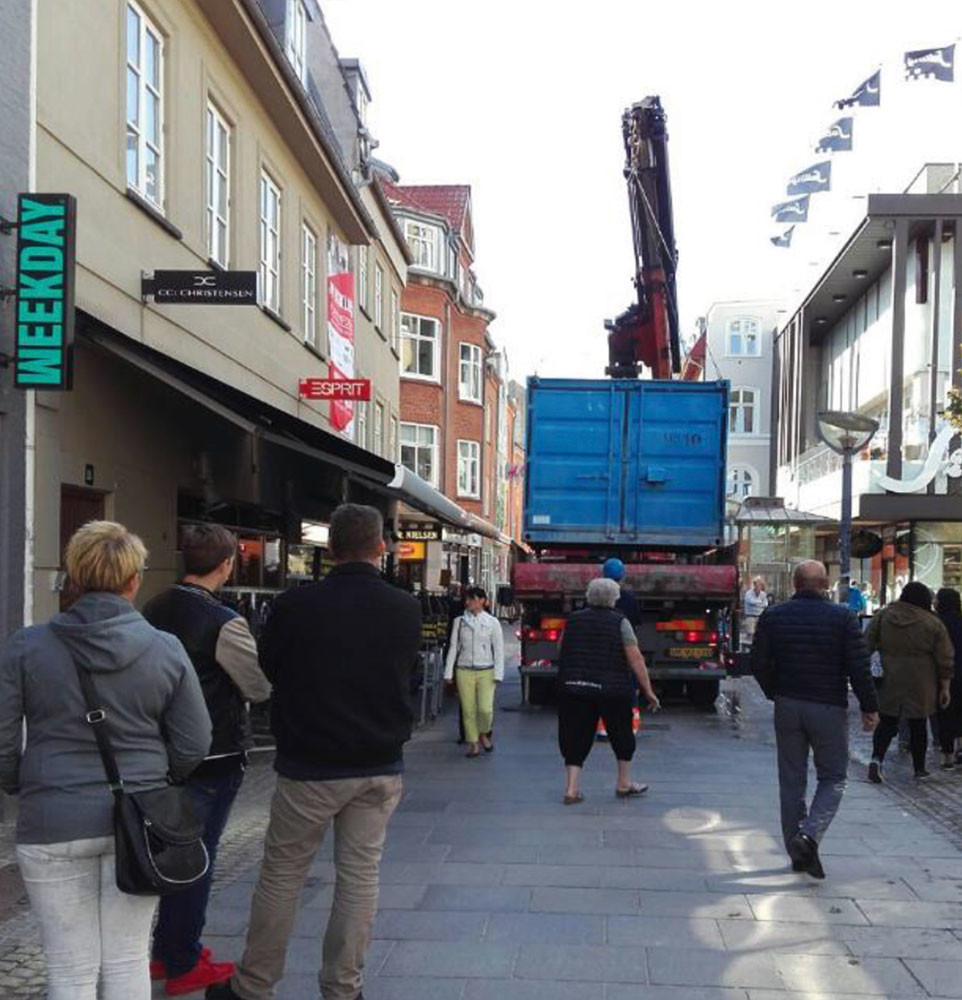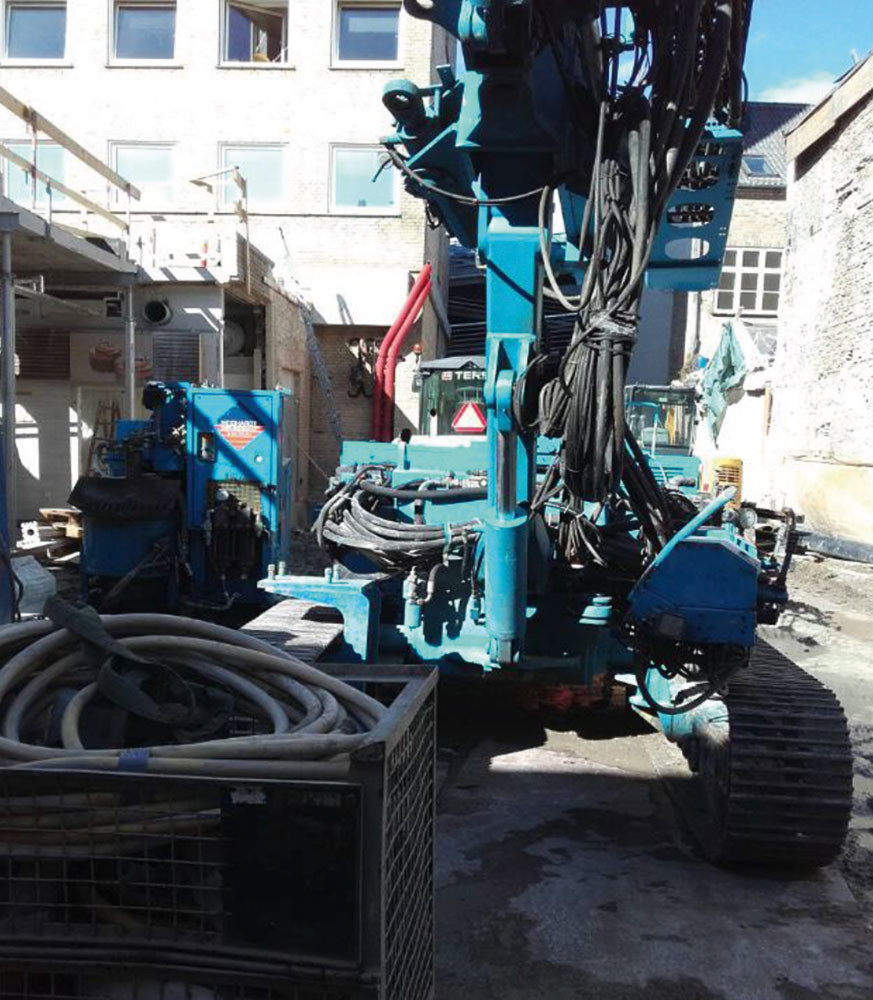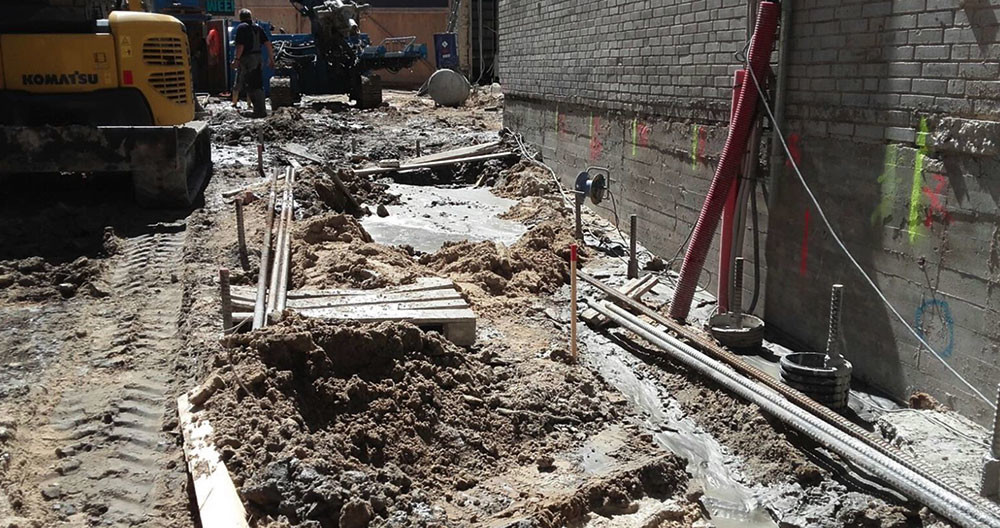Gewerbe- und Wohnimmobilien, Aalborg
As an eminent property manager in Aalborg our client plans the reconstruction of new residential / commercial housing units in the heart of Denmark’s northern “capital” of Aalborg. The new multistory buildings are situated at Bispensgade 14 and Algade 16 in the pedestrian zone of the city center and have bases with width of around 4,0 to 12,0 m and length of ca. 30 m. Due to narrow access the building sites were only accessible before business opening hours in the mornings (Image 1).
Therefore, careful planning and coordination of supply and disposal activities were essential. To be sure of the load capacity, we successful tested four test piles with a planned testload of 381 – 413 kN before producing the remaining piles. The test piles were later embedded into the overall foundation planning. The narrow work space and tight drill patterns required a compromise of a small drill rig that could nevertheless handle the difficult geology posed by the firm clay.
Our drilling rigs type KR-802 and KR 803 were ideally equipped to tackle these challenges (Image 2). We were even able to use a double-casing drilling system to control backflush and prevent softening of the water-sensitive building grounds. Steel bars were installed in 6,0 m lengths by excavator.
Disposal of backflush was accomplished with mud pumps leading the material from the drill point into mud containers. Drilling works were slightly compli-cated by residual foundations and boulders that had to be removed or perforated with specialty drilling tools. In some areas, vertical plastic pipes were placed as a drill guide so to prevent damage of power cables (Image 3). We are happy to have completed all tasks in a timely and flawless fashion and are thankful for the excellent preparation and collaboration on- and off-site with our client’s work team!
City-Ejendomme Aalborg
City-Ejendomme Aalborg
System: | Mikropfahl Typ GEWI, Ø 40mm |
|---|---|
Anzahl: | 171 Stück |
Länge: | 18 - 19,50 m |
Prüflasten: | bis zu 330 kN |
Bohrtechnik: | Doppelgehäusebohrmethode mit Wasserspülung (Duplex) |
Ausführungszeitraum: | Juli bis August 2016 |


